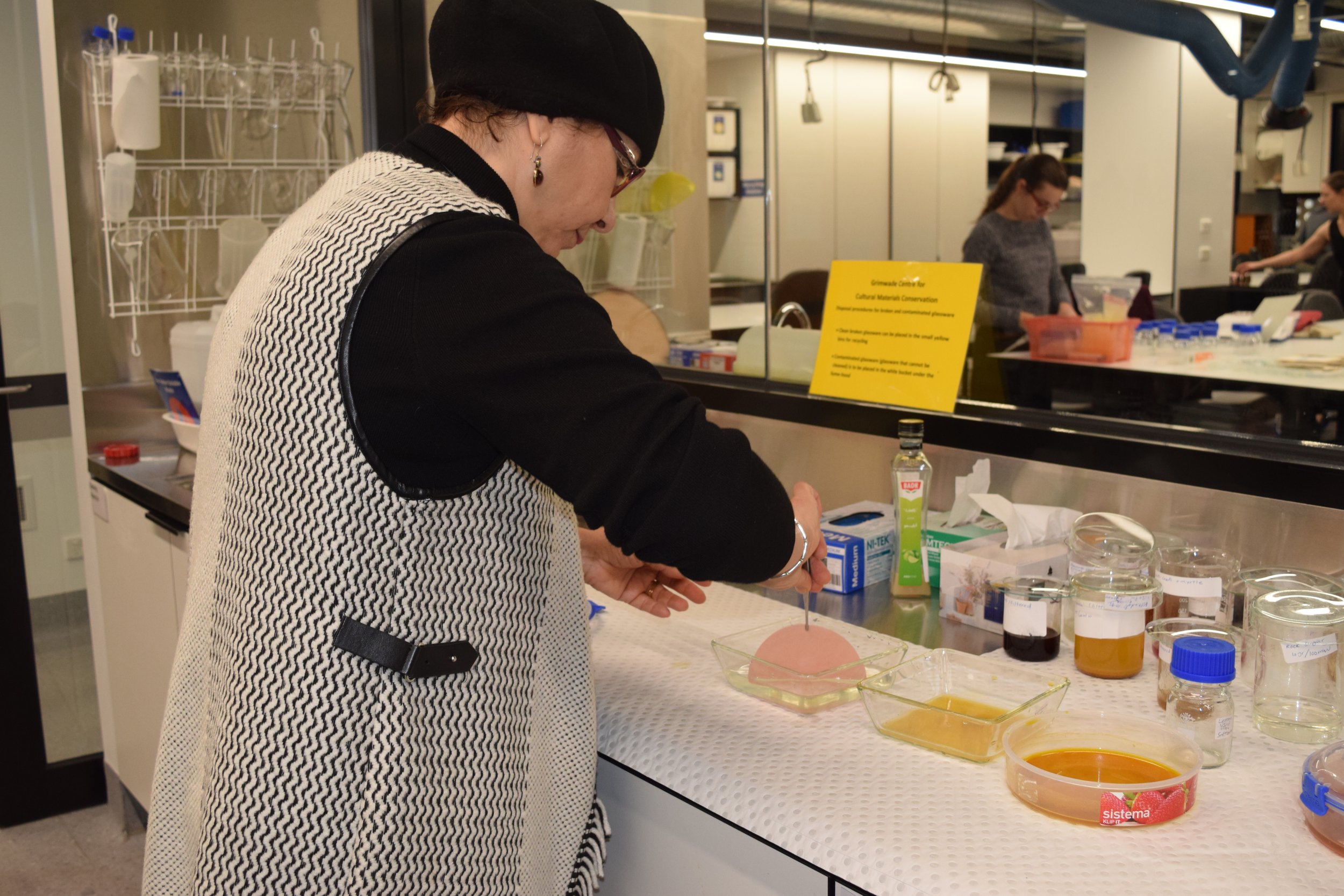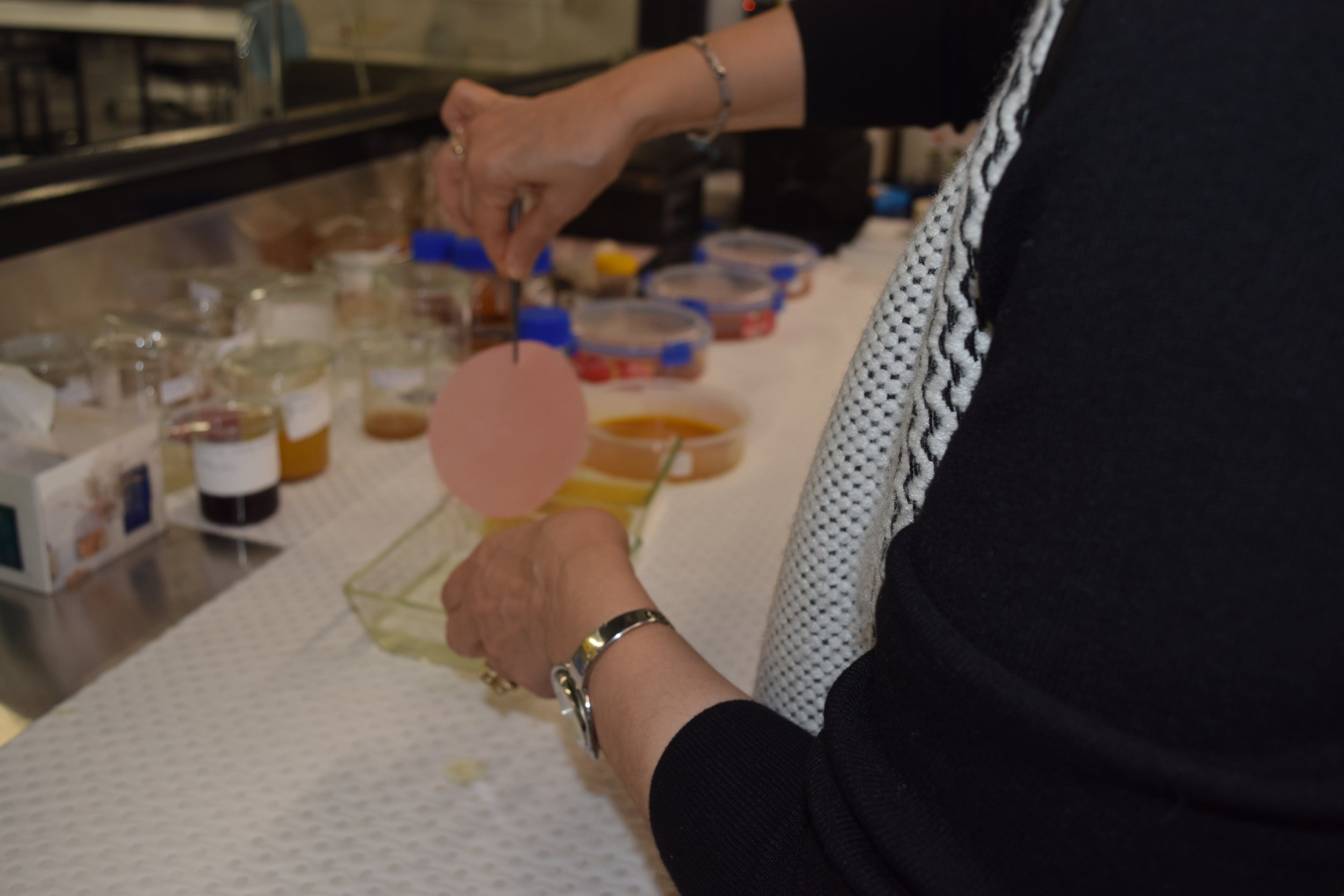SAFFLOWER PEACH (ŠAFTĀLU) COLOUR DYE RECIPES
Only two sources mention peach colour (šaftālu), which is obtained with the inferior quality of safflower. Resāleh-ye khošnevīsī (1120 A.H./1708 A.D.) in 18th century and Resāleh Dar Bayān-e Rang Kardan-e Kāğaḏ in 19th century describe the recipe as follows:
گل شفتالو – و اگر می خواهیم گل شفتالو بدر آریم به شهاب ادنی، به همین ترتیب رنگ می کنیم وگر سبکتر مطلوب باشد، بیشترکی بیندازد، تا دلخواه براید
If you want to produce a peach color using safflower, dye the paper with a lesser quality of safflower for a lighter shade. For a deeper hue, extend the dyeing time until the desired color is achieved
Experiment:
Start by taking 5g of dried safflower petals and grind them thoroughly using a pestle and mortar or an electric blender. Transfer the ground petals to a muslin cloth, tightly closing it to create a sac. Rinse the sac with cold water until all the yellow colorant is extracted. Squeeze the washed safflower in the muslin cloth until it's dry. Place it in a mortar and rub it with your fingers. Add 1-2 grams of alkaline ash and grind until the red color appears. Put it back in the muslin cloth. Use a narrow pipe to slowly pour water over the safflower, extracting three types: first, 'šahāb-eaʿlāʾ,' second, 'aowsaṭ,' and third, 'ʿadnī'. To obtain a peach color shade, dip the paper in the third extract known as 'ʿadnī'. For dyeing paper, prepare three vessels with dye, lemon juice, and water. Dip the paper successively in the dye solution, lemon juice, and water. Dry the dyed paper in the shade.





